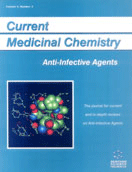Abstract
During recent years, new extended-spectrum β-lactamase-type enzymes (ESBL) have emerged worldwide. The new enzymes, called CTX-M-type enzymes, belong to Ambler class A β-lactamases, and possess a serine in the active center of the molecule. The family of CTX-M enzymes is grouped, on the basis of similarities in amino acid sequences, into five major phylogenetic categories: the CTX-M-1 group, the CTX-M-2 group, the CTX-M-8 group, the CTX-M-25 and the CTX-M-9 group. The designation “CTX-M” refers to potent activity against cefotaxime, an aminotiazolil cephalosporin with a methoximino group; these enzymes have only remanent activity toward ceftazidime, another aminotiazolil cephalosporin with a 2-carboxy-2-oxypropaneimino group instead of the methoximino group. The substrate specificity suggests the existence of an active centre in the enzymes able to provide the amino acids and structural requirements of this selective antibiotic hydrolytic profile. As regards the crystalline structure of the CTX-M enzymes, only that of Toho-1 has so far been resolved. There have recently been increasing numbers of reports in the medical literature describing the appearance of new CTXM- type enzymes that are able to hydrolyze ceftazidime, and indicating that the bacterial strains harboring these enzymes show high levels of resistance to ceftazidime. So far, it has been shown that only two unique amino acid replacements are required to confer this peculiar phenotype of ceftazidime hydrolysis (Asp240-Gly and Pro167-Ser, following the criteria for Ambler numbering). As regards cefotaxime hydrolysis, Ser130-Gly replacement in CTX-M-9 and Arg276-Asn in CTX-M-4 decreases hydrolytic activity against cefotaxime. However, no further studies have been carried out to elucidate which new amino acids are necessary for cefotaxime incorporation and hydrolysis. Our research team is currently investigating this, and we have recently discovered new amino acids with critical activity against cefotaxime. In summary, we report here up-to-date information about structural/functional studies of CTX-M- enzymes as well as a description of the enzymes and their phylogenetic relationships.
Keywords: ctx-m enzymes, structure-function
 6
6

